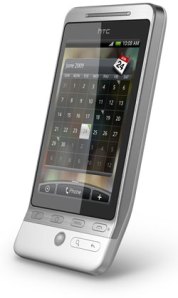
Part of the promise of the Android mobile platform is that its constantly evolving, so that folks with Android devices can look forward to new features and capabilities as the operating system evolves. Of course, many Android users are learning that the release of a new version of Android doesn’t mean that version becomes instantly available for their particular device on their particular carrier. ComputerWorld looked at how device manufacturers with Android devices on the four major U.S. mobile carriers handled upgrades to Android 2.2 “Froyo” during 2010…and, while one phone maker stood out, the picture is certainly rather bleak.
The survey found that more devices made by HTC have jumped on the Froyo bandwagon than devices from their competitors, with half of its Android devices upgraded to Android 2.2 within 2010. Motorola came in second place with 15.4 percent of its Android devices running Froyo by the end of the year—although the study notes many of its phones didn’t ship until November of 2010, leaving little time for an end-of-year upgrade. (Android 2.2 was released in June 2010; Motorola shipped four phones with Android 2.1 in November.) Motorola just barely edged HTC on upgrade times, with phones on average getting Android 2.2 in 54.5 days; HTC was just behind with an average 56-day upgrade time.
Other manufacturers didn’t fare so well: Samsung managed to upgrade only one device to Android 2.2 during 2010 (and that upgrade wasn’t exactly smooth). All the folks who have purchased Galaxy S smartphones are still waiting for Android 2.2. Dell, LG, and Sony Ericsson didn’t get any devices upgraded to Froyo during the year.
The study chose to omit the T-Mobile G1 (the first Android device) and (for obvious reasons) didn’t look at phones that shipped with Android 2.2 pre-installed.
The gap between an Android release and its availability to consumers depends on both the device manufacturer and mobile operators: device makers have to make sure the upgrade works with their hardware (and any front-ends they’ve built, like HTC Sense or Motoblur) while carriers have to test to ensure the new OS won’t disrupt their operations and systems.
As Android 2.4 and 3.0 loom on the mobile horizon, the lag between the version of an operating system installed on a device when it goes on sale and the availability of updates becomes even more galling to consumers, who generally have to commit to a two-year service contract. From a mobile operator’s perspective, the value of a smartphone use is mostly in the service contract rather than the device, carriers are primarily concerned with keeping customers on contract. To the extent a new operating system enables carriers retain customers, an upgrade has value…but most carriers would rather just sell a customer a new phone (and an extension on their service contract) rather than work on supporting an already-sold device.
Editors' Recommendations
- Samsung Galaxy Z Fold 3 vs. Galaxy Z Fold 2: Upgrade time?
- Motorola One Zoom vs. Nokia 7.2 vs. Google Pixel 3a: Midrange melee
- HMD’s Nokia 2.2 is now available in the U.S., and it’s slated to get Android Q
- Google Assistant 2.0 isn’t just a minor evolution. It’s a game-changing upgrade

